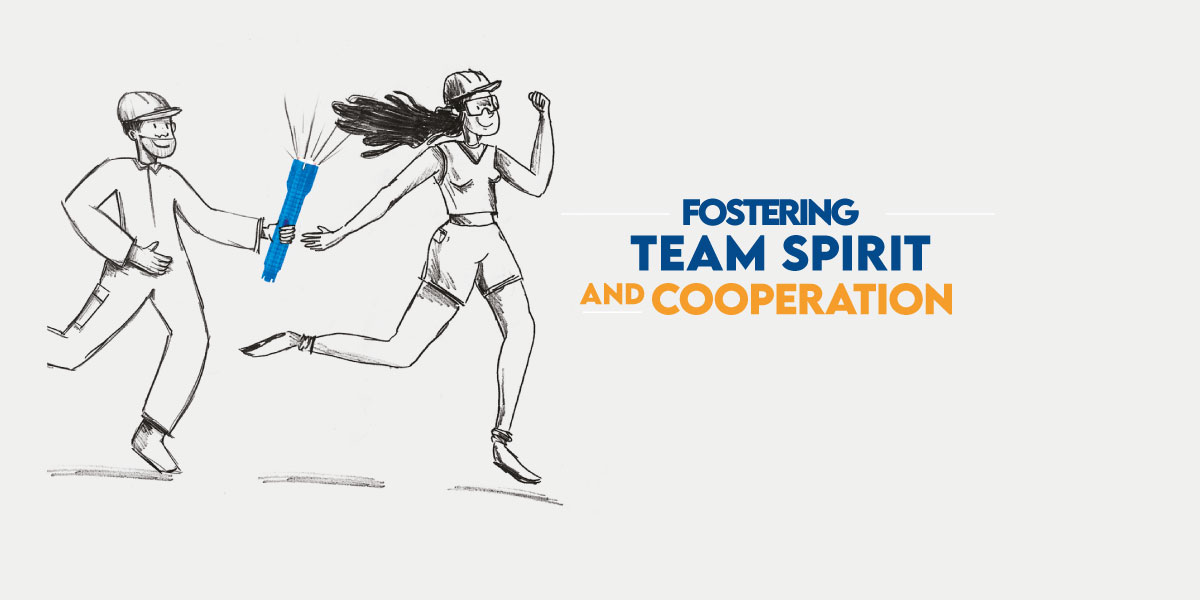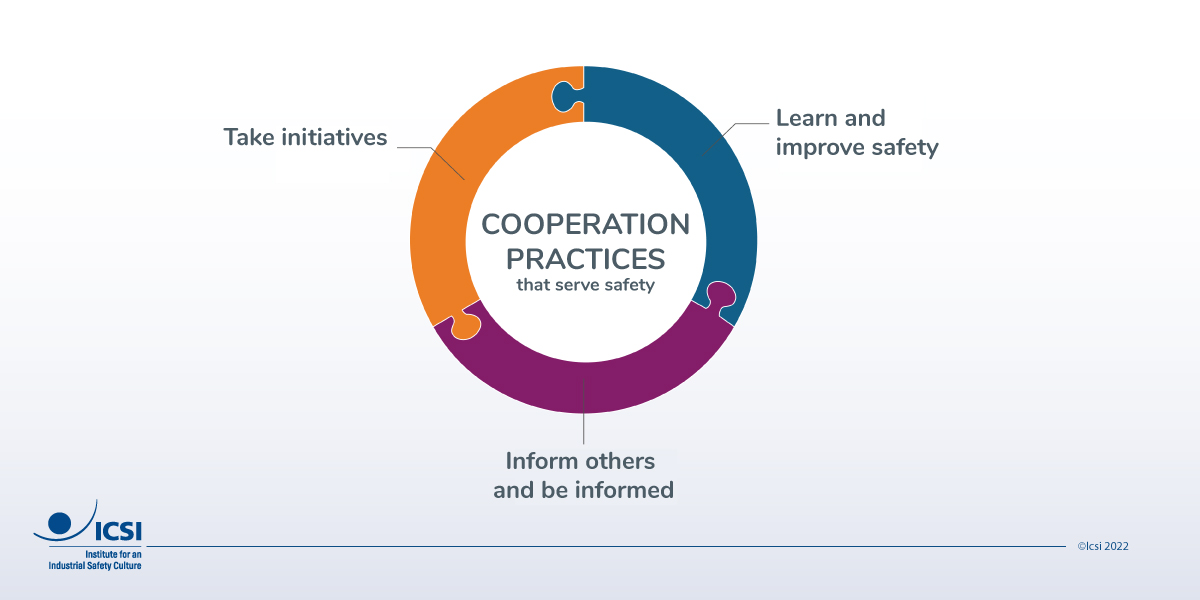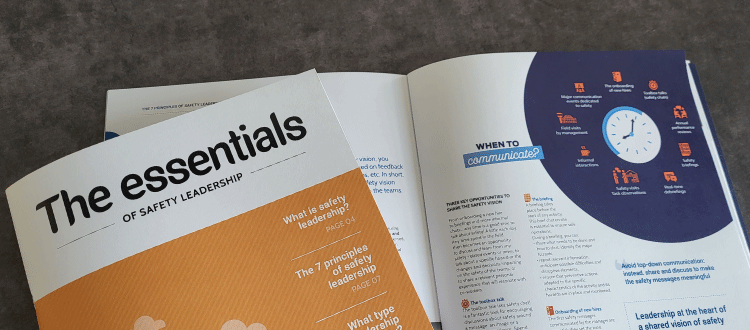Fostering team spirit and cooperation
 Fostering team spirit and cooperation
Fostering team spirit and cooperation
Remember the old adage, ‘Alone I go faster, together we go further’... well, it’s true! Fostering trust, cooperation and shared vigilance isn’t always easy, but these skills are key to safety leadership. This is the sixth safety leadership principle.
Trust and cooperation, why are they important?
Is it enough to tell your team or organization that you want to see ‘more team spirit, better cooperation’, for it to happen? No, says conference speaker and author Simon Sinek in a TEDex talk on cooperation and trust: ‘I can’t just say ‘trust me’ to make you trust me. I can’t just tell two people to cooperate so that they do. Because trust and cooperation aren’t instructions, they’re feelings. They can be fostered by putting in place conditions that support them, but they cannot be decreed.
If we feel that we are trusted, we put our energy into protecting ourselves, together, from hazards and accidents. Without trust, we direct our energy against others, to protect ourselves from a boss, a colleague, a company that tells us what to do...
Cooperation practices that serve safety
Pour sortir des silos dans lesquels les entreprises ont parfois pu « caser » leurs services, pour faire en sorte que la sécurité – mais aussi bien d’autres sujets ! – soit transverse, il nous appartient de définir de nouveaux modèles de coopération. Coopération entre le management et les salariés, entre salariés d’une même équipe ou avec d’autres équipes, entre entreprises utilisatrices et entreprises intervenantes… La coopération se traduit par 3 types de pratiques :
If we want to escape from the silos that companies sometimes ‘box’ their services into, in order to ensure that safety – not to mention many other topics! – is transversal, we need to define new cooperation models. Cooperation between management and employees, between members of the same team or other teams, between contractors and their subcontractors... Cooperation translates into 3 types of practices:
- Inform others and be informed: cooperate to ensure the flow of information that is needed to better-identify and report anomalies and malfunctions,
- Learn and improve safety: cooperate to transmit knowledge that is acquired through experience, to share accident and incident analyses,
- Take safety initiatives: cooperate together to make the best decisions– or at least find a consensus – when faced with unforeseen events.
So, right now, how can I foster this team spirit and cooperation?
1. Find a shared interest in cooperating
In the first place, fostering cooperation requires that the people in a group – and between groups – ‘find meaning in cooperation, in terms of shared interests and values, in order to commit to it. Because cooperation is expensive, it requires recognizing that we cannot do everything by ourselves’, says Florence Osty, sociologist.In the first place, fostering cooperation requires that the people in a group – and between groups – ‘find meaning in cooperation, in terms of shared interests and values, in order to commit to it. Because cooperation is expensive, it requires recognizing that we cannot do everything by ourselves’, says Florence Osty, sociologist. Ask yourself ‘What are the interests of the different actors in cooperating? What can generate shared meaning?’
2. Encourage dialogue
A group is neither a homogeneous whole where each member shares everything 100%, nor an agglomeration of individuals. Develop your ability to listen, encourage discussion about major risks, rules or good practices, ensure that there is space to talk about what is happening in the workplace, major risks, etc. While this is clearly not an easy mission, it is essential to have good working relations, and to fight against organizational silence.
3. Fostering trust
Finally, as we have seen, trust is a key driver of shared safety. In the context of a company, the creation of a just culture is fundamental to encouraging trust. This means establishing a clear, fair and just framework for recognizing good practices and responding to deviations.

Shared vigilance at the service of cooperation
Shared vigilance is one of the most important safety leadership practices.
It is based on the principle that, when we are concentrating on a task – a valve that has to be opened, a meeting, etc. – we become deaf and blind to external signals, such as a noise. “We only perceive a small part of our environment, and this is normal”, explains Isabelle Simonetto, a Doctor in neuroscience.
We have to accept that we cannot see or hear everything! So, let’s put in place an appropriate response: shared vigilance. This consists, in the event of a hazardous situation or a doubt, in:
- Daring to speak up
- Knowing how to speak up
- Accepting being challenged
Shared vigilance must be practiced by everyone, regardless of how high or low they are in the hierarchy. Operator, manager, member of the management team, ask yourself this question: ‘Are we applying the principles of shared vigilance?’
Safety leaders play a key role in fostering team spirit and cooperation. It is up to them to:
- Acknowledge and reward cooperation within and between teams, and…
- on the other hand, identify a lack of cooperation and do what is needed to improve the situation
- Develop a team spirit that values safety and is based on mutual respect
- Lead constructive discussions, and provide a space for dialogue
- Look at what groups are already in place, and what ‘makes sense’ to people
- Embody a climate of trust, and encourage a fair and just culture
---
| Read more about the 7 principles of safety leadership |





